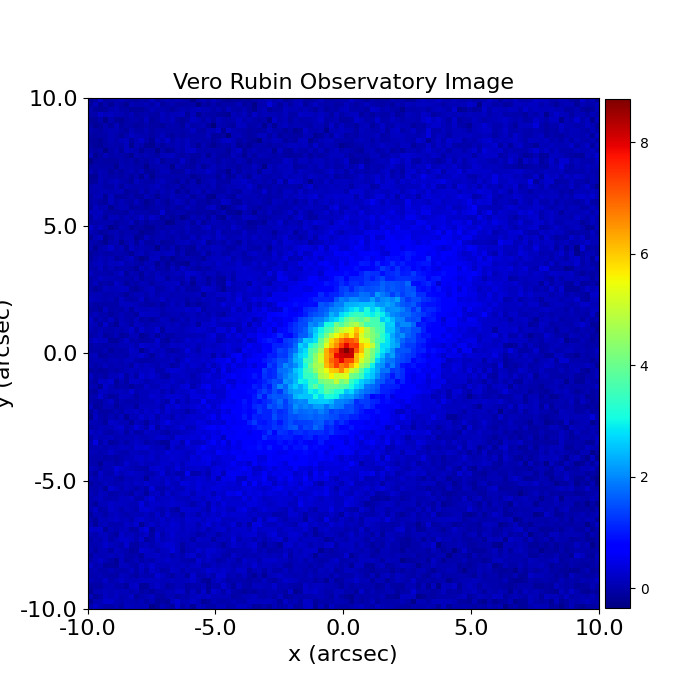Simulating Galaxies#
PyAutoGalaxy provides tool for simulating galaxy data-sets, which can be used to test modeling pipelines and train neural networks to recognise and analyse images of galaxies.
Simulator#
Simulating galaxy images uses a SimulatorImaging object, which models the process that an instrument like the Hubble Space Telescope goes through to observe a galaxy. This includes accounting for the exposure time to determine the signal-to-noise of the data, blurring the observed light of the galaxy with the telescope optics and accounting for the background sky in the exposure which adds Poisson noise.
psf = ag.Kernel2D.from_gaussian(shape_native=(11, 11), sigma=0.1, pixel_scales=0.05)
simulator = ag.SimulatorImaging(
exposure_time=300.0, background_sky_level=1.0, psf=psf, add_poisson_noise=True
)
Once we have a simulator, we can use it to create an imaging dataset which consists of an image, noise-map and Point Spread Function (PSF) by passing it a plane and grid.
dataset = simulator.via_plane_from(plane=plane, grid=grid)
Here is what our dataset looks like:



Examples#
The autogalaxy_workspace includes many example simulators for simulating galaxies with a range of different
physical properties and for creating imaging datasets for a variety of telescopes (e.g. Hubble, Euclid).
Below, we show what a galaxy looks like for different instruments.




Wrap Up#
The autogalaxy_workspace includes many example simulators for simulating strong lenses with a range of different
physical properties, to make imaging datasets for a variety of telescopes (e.g. Hubble, Euclid) as well as
interferometer datasets.